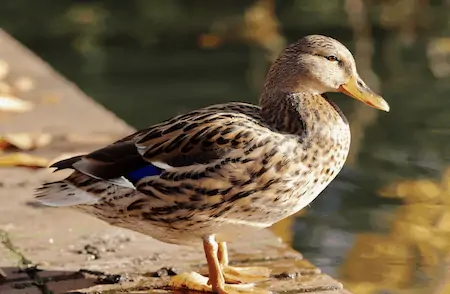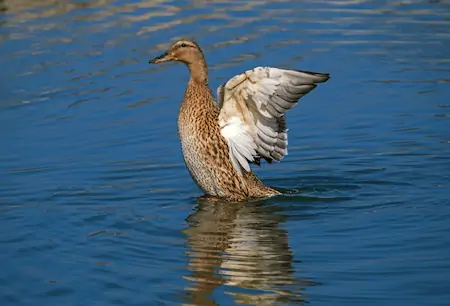Duck calls are used to improve the efficiency of hunting. If you are trying to hunt a duck, it is not enough to only have a rifle with a scope that costs 500 bucks; you need to know how to call your prey.
If you are a beginner and you don’t know how to use a duck call to enhance your hunting outcomes, then you just came to the right guide. You will learn through a series of steps how to make those precious calls count.
Duck calls have evolved over time and are now designed with volume and tone adjustment tools. It can thus be challenging for a new person to learn how to use these instruments effectively.
Steps in Using a Duck Call
There are six main steps that any novice needs to know about using a duck call. Each step is clearly outlined below.
Additionally, there is information about the various types of calls used on ducks and the best instruments to use for each occasion.
Step 1: Know Your Instrument
The first phase is all about knowing what a duck call is and about the available types that exist. There are two main types, and they include:
- Singe reed duck call and
- The double reed duck call
While both of them work, it is vital that you understand how exactly. Each hunter uses a different duck call depending on which makes you comfortable.
The single reed duck call was designed for use by expert hunters. It provides the best sound control, and its sound covers a larger area than the double reed one.
It is, therefore, not the most recommended for those who are new to use them.
The double reed duck call on the hand is the best for beginners. Most hunters who use duck calls begin with this type before upgrading to the other one when they finally get the hang of it.
They also require more breath power as compared to the single reed type.
However, you shouldn’t confine yourself to the double one if you feel you can handle the single reed duck call. After all, there are no rules to this.
Step 2: Selecting the Make-up of the Duck Call
There are different varieties of duck calls made from various assortments of materials. Some are made out of wood, others acrylic, and some from polycarbonate material. Each make of a duck call influences the type of sound it makes and its frequency.
Wooden duck calls produce sounds with an averagely low frequency. The sound made is soft, and it is, therefore, preferred by a lot of hunters.
Acrylic ones, on the other hand, are louder and high-pitched, making the sounds they produce sharp. They come in handy if you are in an area with a lot of natural noise such as running water in rivers and fast winds that whistle.
Moreover, they are also used in the event when the ducks are far away.
The final type, polycarbonate duck calls, produce the best sounds that perfectly blend the previous two. Because of this, they are the most popular with hunters.
Step 3: Holding the Duck Call
Take the duck call in your hands and ensure you properly grasp it by the sound chamber. Your ring finger should be around it while the small finger curve around the hole.
Alternatively, you can hold it as if you were holding a cigar and then manage the sound using the palm of your other hand.
Step 4: Blowing the Call
To produce the perfect sound, take a deep breath, and when you are blowing, push the air from your diaphragm and not just your lips. Your bow should be similar to a cough.
The trick is to avoid producing a whistle with your call. The sound coming out should be of the right frequency and pitch.
Step 5: Keep the Call Short
Always ensure that the sound you produce is quick and gentle. Don’t make too long calls. Short sounds are much better.
Step 6: Repeat
Now that you have learned how to make those sweet short calls keep calling. Blowing the duck call repetitively sends the message out to the ducks, and they will respond by following the sound to its source.
Make sure your ear is on the ground attentively listening for any popping ‘quacks’ around you.
Knowing What You are After
Understanding how to make a duck call is not enough to bag you a duck. You need to weigh in more information. There are different types of ducks, and they all respond differently to calls and types of duck calls.
Take, for instance; pintails produce different sounds in comparison to widgeons or mallards. If you don’t understand your ducks, then your whole attempts could be futile in the long run.
When you go out hunting, carry a photograph with you that will remind you about the kind of duck you are after based on the whistle you take with you.
Knowing Your Calls
Ducks have a language, and you need to understand it to know how to use your duck call effectively.
While a ‘quack’ is the foundation of all the other calls, there will be modifications based on what type of call you want to produce or make.
Male calls also sound different from female calls, thus emphasizing the need to learn their differences.
Each duck call is supposed to produce three fundamental calls:
- The Quack: It is mostly used to lure waterfowls through sharp sounds.
- The Feed Call: These are rapid short notes that vary in frequency, and they mimic ducks eating.
- Comeback Call: They are notes designed to lure ducks that are far away. They tend to be long and loud.
A feeding call goes like ‘taka-taka-taka’ after making a quack at the beginning of your call. If the ducks are far away, making calls that sound like ‘cak cak cak’ could be a great way to signal them and get their attention.
Extended calls tend to signify a lonely hen who is in sorrow. This is likely to draw out other ducks that may seek to comfort her. These calls, however, should only last a few seconds at most.
Extra Tips
- When hunting with a friend, try to use different types of duck calls. Using the same one, especially the single reed type, is more likely to scare the ducks.
- Other than the single and double reed duck calls, there is also a rare type that is a triple reed call. It is not as popular as the other two, but you can always give it a try to see if it works for you.
- Always dress to blend in with the environment where you are going duck hunting.
Conclusion
There are many other things to learn about using a duck call, especially with the advanced ones. However, the above guide is all you need to know as a beginner.
If you follow the steps outlined above, you will catch your first ducks in no time, and what an accomplishment it will be for you.
As a duck hunter, learn to be conscious of your environment and keep practicing the sounds. The better your mimic of the duck sounds, the higher your chances of bagging one.
Ensure you also know your duck varieties to have a better idea of how to lure them with calls.


